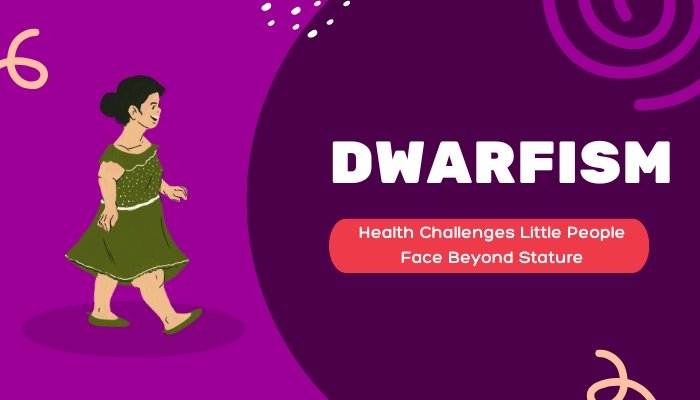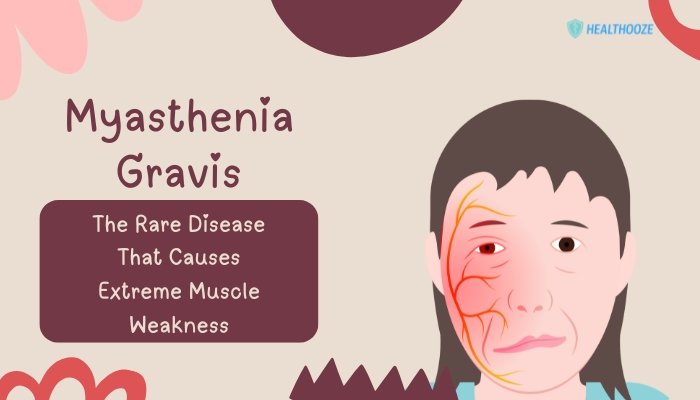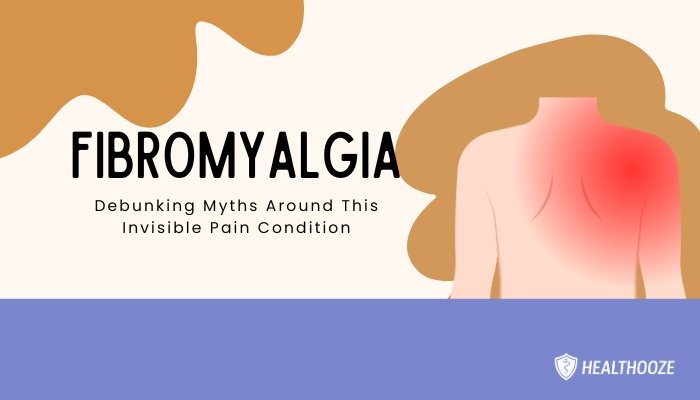Introduction
People often assume that disabilities must be obvious: the use of mobility aids, visible signs of impairment, or clear external cues. Yet, a significant number of individuals live with conditions that remain unseen by casual observers.
Hidden or invisible disabilities encompass a wide spectrum of physical and mental health issues that do not present clear outward markers. These may include chronic pain disorders, autoimmune conditions, mental health challenges, neurological variations, and many others that do not fit traditional assumptions about disability.
Because these illnesses exist beneath the surface, society tends to overlook or misunderstand the challenges they create. Those affected might work full-time, raise families, or remain active in community events while coping with pain, fatigue, or emotional struggles.
They can appear “fine” or “healthy,” prompting skepticism or minimized support from peers, employers, and even medical professionals. Over time, the discrepancy between how a person appears and what they experience can affect self-esteem, relationships, and overall health.
This article examines the daily realities of living with an invisible illness. It addresses the unique obstacles that arise when a condition lacks clear external signs, and highlights supportive strategies, legal safeguards, and advocacy approaches.
Readers will gain insights into emotional burdens, communication hurdles, and the importance of social awareness. By broadening our understanding of hidden disabilities, we can create a more inclusive society that respects the experiences and rights of all.
Understanding Invisible Illness
Invisible or hidden disabilities are conditions that impact a person’s physical, mental, or cognitive abilities but remain inconspicuous to the casual observer. These hidden aspects can involve chronic symptoms, periodic flare-ups, or steady discomfort. One individual might face crippling fatigue, another might navigate persistent joint pain, and another might struggle with anxiety—yet none of these challenges are evident upon a simple glance.
Common Types of Hidden Disabilities
- Chronic Pain Disorders
Conditions such as fibromyalgia or chronic low back pain can lead to daily discomfort. Pain severity may fluctuate, sometimes debilitating and other times bearable enough to carry on routine tasks. - Autoimmune Diseases
Rheumatoid arthritis, lupus, and multiple sclerosis can cause inflamed joints, organ complications, and exhaustion. Periods of remission may give the impression of recovery, only for flare-ups to return unexpectedly. - Mental Health Conditions
Depression, anxiety, post-traumatic stress disorder (PTSD), and other mental health diagnoses are not visible to others. Emotional distress, panic attacks, or low mood can be powerful yet invisible forces. - Neurological Variations
Individuals on the autism spectrum, those with ADHD, or with mild traumatic brain injuries may need more time for processing or organizational tasks. Despite no outward sign of these differences, their daily routines can be heavily impacted. - Chronic Fatigue Syndromes
Chronic fatigue syndrome (also called myalgic encephalomyelitis) manifests as intense exhaustion that does not improve with rest. It complicates work schedules, chores, or social gatherings. - Cardiac and Pulmonary Conditions
Heart disease or asthma may limit a person’s stamina. They might struggle with tasks requiring exertion, but appear healthy until an episode arises.
Complexity of Pain and Fatigue
Pain and fatigue are two of the most widespread yet overlooked factors in invisible disabilities. Chronic pain can stem from nerve damage, inflammatory conditions, or unknown causes that defy standard testing. Fatigue is not simply “feeling tired”—it is a profound exhaustion that makes basic daily activities an uphill battle. Because these symptoms do not present external markers like bandages or casts, loved ones or coworkers often question their legitimacy or severity. This skepticism can intensify a sufferer’s anxiety about being believed and may hinder them from requesting help.
Social and Emotional Impact
Coping with an invisible illness introduces layered emotional and social difficulties. Observers might comment, “But you don’t look sick,” implying that outward appearance should define the authenticity of one’s condition. Over time, such remarks can weaken self-confidence and prompt individuals to either hide their conditions more meticulously or overextend themselves to prove they are not “lazy.”
Emotional Toll of Invisible Disabilities
- Isolation: Even supportive friends or family may not fully grasp the daily struggles of pain or anxiety. This can lead individuals to feel isolated in their experiences.
- Guilt or Shame: People may blame themselves for not meeting social or professional standards, asking, “Why can’t I just push through?”
- Fear of Judgment: Many worry about being perceived as attention-seeking if they disclose their challenges. This fear often spurs them to minimize their illness publicly.
- Self-Doubt: With repeated invalidation or dismissal from peers, some start to doubt their own experiences and question if they are exaggerating.
Common Misunderstandings
- Assumption of Laziness
When someone cancels plans or requests accommodations, observers may label them as irresponsible. They do not see the “extra” steps needed for that person to function normally. - Misinterpretation of Fluctuating Symptoms
Many invisible illnesses wax and wane. A “good day” might involve relatively low pain or normal energy, leading outsiders to assume the individual has recovered entirely. - Unwanted Advice
Loved ones may suggest simplistic solutions or home remedies, believing the condition can be fixed through willpower, minor diet changes, or positive thinking. While these suggestions often come from care, they can trivialize the complexities of a serious condition. - Expectations of Gratefulness
Sometimes, if an accommodation is made—like flexible work hours—others assume the person with an invisible disability should be perpetually thankful and never request further support.
Work and Education Challenges
Individuals with invisible disabilities often navigate professional or academic landscapes that revolve around assumptions of constant availability and consistent performance. A lack of visible impairment can generate confusion or doubt about requests for flexible scheduling, rest breaks, or other adjustments. Though many institutions strive toward inclusivity, unspoken biases remain.
Disclosure Dilemma
- Fear of Discrimination: Disclosing one’s condition can bring stigma, overlooked promotions, or negative evaluations. Some managers may view the person as unreliable.
- Privacy Concerns: Health details are deeply personal. Many prefer not to reveal specifics, worried that colleagues might pry or gossip.
- Inconsistent Symptoms: Because symptoms ebb and flow, employees or students must decide whether to share partial information that “on some days I might need extra breaks,” which can prompt suspicion from superiors unaccustomed to sporadic needs.
Reasonable Adjustments
When an employer or educator acknowledges invisible disabilities, certain modifications can significantly enhance comfort and productivity:
- Flexible Schedules: This might involve later start times for morning stiffness or fatigue, or remote options if commuting aggravates symptoms.
- Extended Test or Project Deadlines: For students experiencing flair-ups or mental health crises, extended timelines reduce undue stress and help produce better work.
- Assistive Technology: Speech-to-text software, note-taking apps, or organizational tools can offset memory or focus challenges.
- Private or Quiet Spaces: For those with sensory overload or the need to rest intermittently, having a secluded spot can alleviate anxiety and pain.
Importantly, individuals must engage in clear self-advocacy to outline what is needed, and institutions must remain open-minded that not all disabilities manifest as physical constraints.
Strategies for Daily Life
Living with an invisible illness requires practical approaches that balance self-care, emotional support, and open communication. Each person’s situation differs, but certain core strategies often foster resilience and reduce day-to-day stress.
Self-Advocacy and Communication
- Develop a Clear Explanation: A brief, honest explanation of one’s condition can help family or friends understand changes in energy or availability.
- Set Boundaries: Communicate limitations to loved ones or colleagues. If social events drain too much energy, politely decline or commit to a shorter duration.
- Seek Second Opinions: If a medical team dismisses symptoms or focuses on superficial theories, consider consulting another specialist to ensure thorough evaluation.
- Use Lists and Reminders: With fatigue, pain, or medication side effects affecting memory, note-taking apps or physical planners can help stay organized.
Support Systems and Peer Communities
- Support Groups
Whether online or in-person, connecting with others managing similar diagnoses helps normalize fears and frustrations. Participants swap coping ideas, share success stories, or discuss doctor recommendations. - Therapy and Counseling
Mental health professionals can guide stress management, address self-esteem concerns, and help process the grieving over lost abilities. Therapists trained in chronic illness or disability issues may provide a more specialized approach. - Friends and Family
Not every friend will understand invisible illnesses, but identifying those who show empathy and genuine willingness to learn can foster a strong emotional safety net. Even a single ally can help deflect negative influences. - Disability Advocates
Some nonprofits or advocacy groups offer guidance on applying for disability benefits, writing accommodation letters, or learning about legal protections. These resources can be invaluable for complex bureaucratic processes.
The Healthcare Journey
Medical appointments for individuals with hidden disabilities can be draining. Patients might cycle through different specialists, endure multiple tests, and re-explain symptoms repeatedly. This process can be time-consuming, expensive, and riddled with stigma if a diagnosis is unclear or unconfirmed.
Securing a Diagnosis
Diagnosis might involve:
- Blood Work and Imaging: Identifying markers of autoimmune activity, structural problems, or hormonal imbalances.
- Neurological Testing: Assessments for conditions like multiple sclerosis or certain types of chronic migraines.
- Psychological Evaluations: For mental health conditions or cognitive differences such as ADHD.
- Functional Assessments: Physical therapy or occupational therapy evaluations to measure mobility, stamina, or dexterity.
In many hidden illnesses, standard tests return “normal” results. This inconclusive data may lead physicians to label complaints as psychosomatic or stress-related. While psychological factors can intensify physical symptoms, they often do not explain them entirely. Persistence is crucial. A combination of thorough record-keeping, symptom diaries, and second (or third) opinions can push the search for an accurate diagnosis.
Stigma in Healthcare Settings
Some providers are skeptical when confronted with chronic, hard-to-define symptoms. This can produce “medical gaslighting,” where patients feel dismissed or told their experiences do not match clinical findings. The result is:
- Delayed or Incorrect Treatment: Without a solid diagnosis, one might be prescribed the wrong medications or no therapy at all.
- Emotional Exhaustion: Repeated invalidation saps confidence, fueling anxiety about future appointments.
- Financial Hardship: Ongoing specialist visits and testing can become a heavy cost, especially if patients must pay out of pocket.
Growing emphasis on patient-centered care aims to improve this dynamic by training doctors to respect reported symptoms and collaborate in treatment planning.
Legal Protections and Advocacy
In many regions, laws exist to protect those with disabilities from discrimination in employment, education, and public services. Though these frameworks often focus on visible disabilities, they typically extend to invisible ones as well. Learning about rights and avenues for recourse encourages individuals to seek necessary accommodations without fear of retaliation.
Understanding Legal Rights
- Reasonable Accommodation: Under legislation like the Americans with Disabilities Act (ADA) in the United States, employers must provide feasible modifications for workers with disabilities. Similar laws exist globally, though specifics vary.
- Confidentiality: Medical or disability-related information shared with HR or supervisors is private. Employers should not broadcast a worker’s health status to colleagues without permission.
- Educational Settings: Universities are often legally required to offer support, such as extended test times or note-taking assistance, for students with documented disabilities.
Navigating Systems
Though laws exist, practicing these rights can be complicated:
- Documenting the Condition
A letter or formal medical statement from a licensed professional often confirms a disability, especially if there is no quick test result. This documentation is critical for official accommodations. - Filing Complaints
If an employer or institution refuses to cooperate, formal complaints can be lodged with relevant labor boards or disability offices. This process can be lengthy, and individuals may feel reluctant to strain relationships further. - Connecting with Advocacy Groups
Local or national organizations specialize in specific conditions (such as lupus foundations or mental health alliances). They offer resources on navigating legal processes and raising awareness.
Building Community Awareness
For people with hidden disabilities to receive understanding and acceptance, broader awareness is needed. Many do not realize that chronic illness or mental health conditions can be debilitating without external markers. Encouraging open discussions and education fosters empathy, reduces stigma, and clears pathways for institutional change.
Public Perception
- Media Representation: Films or articles that depict only visibly disabled characters inadvertently minimize invisible conditions. Calls for diverse storytelling encourage broader recognition.
- Public Education Campaigns: Workshops, social media posts, or community events can spotlight the prevalence of hidden disabilities. Even simple slogans like “Not all disabilities are visible” can shift perceptions.
- Language Sensitivity: Terms like “You look great!” might be well-intended but overlook that the individual could be in severe pain. Respectful, open-ended dialogue is more supportive.
Role of Social Media
Online platforms let those with hidden disabilities share insights, daily coping strategies, or product recommendations (like supportive cushions or specialized medication organizers). Hashtags and forums link people worldwide, sparking movements that call for inclusive policies. Still, social media can also breed misinformation, so cross-referencing with credible sources is vital.
Self-Care Approaches
Thriving with an invisible illness requires more than external accommodations. Personal coping tactics and stress-management routines help stabilize mental health, reduce symptom severity, and sustain motivation.
Stress Management Techniques
- Mindful Breathing: Short, focused breathing sessions calm racing thoughts and help modulate pain signals.
- Gentle Exercise: Low-impact activities—like walking, yoga, or swimming—maintain mobility without overtaxing the body. Schedules can be flexible depending on daily symptom levels.
- Journaling: Writing down feelings or symptom fluctuations reveals patterns and helps track triggers.
- Digital Detox: Stepping away from constant digital stimulation can reduce fatigue or cognitive overload, particularly for those prone to brain fog.
Emotional Coping Tools
- Goal Setting
Breaking tasks into small steps counters the defeatist mindset that arises when facing huge to-do lists. Celebrating minor achievements encourages a sense of progress. - Positive Affirmations
Repeating encouraging statements may sound simplistic, but it helps replace self-critical thoughts with a gentler self-view. - Creative Outlets
Art, music, crafts, or cooking can provide a sense of control and joy. Creating something tangible fosters self-worth and distracts from pain or anxiety. - Professional Help
Ongoing sessions with a counselor or psychologist aid in unpacking stress, adjusting coping methods, or exploring the emotional toll of living with a hidden illness.
Conclusion
Invisible disabilities upend conventional assumptions about disability, revealing that struggles like pain, fatigue, and psychological distress may occur beneath a seemingly “normal” exterior. These hidden conditions challenge not only the individuals living with them but also the communities and systems that respond. Such conditions can carry real physical or mental limitations, yet remain overlooked by onlookers who assume that appearance aligns with health.
Navigating everyday tasks, work demands, or social obligations becomes more complex when stigma and skepticism surface. Individuals must weigh decisions about disclosure, fight for proper accommodations, and handle emotional strains of feeling misunderstood. Pathways to resilience include building comprehensive support networks, refining self-advocacy skills, and using coping strategies that validate personal limits. Society can help by broadening education, eliminating biases, and passing policies that address the nuanced needs of those with invisible illnesses.
Looking ahead, change hinges on collective empathy and accurate understanding. We can all practice considerate communication, remain open to the hidden realities of others, and encourage workplaces and educational institutions to become truly inclusive. By recognizing that not all struggles are visible, we support the dignity and well-being of those who face these invisible challenges each day.
Table: Common Hidden Disabilities and Suggested Coping Strategies
| Hidden Disability | Primary Challenges | Potential Coping Strategies |
| Chronic Pain (e.g., fibromyalgia) | Persistent aches, fatigue, brain fog | – Gentle stretching, pacing – Heat therapy, mild exercise |
| Autoimmune Disorders | Flare-ups of pain, inflammation, exhaustion | – Track triggers (diet, stress) – Accept rest when needed |
| Mental Health Conditions | Mood swings, anxiety, emotional overwhelm | – Therapy, medication – Journaling, mindful relaxation |
| Neurological Variations | Distraction, executive function difficulties | – Structured routines – Digital reminders, planning tools |
| Chronic Fatigue Syndrome | Severe exhaustion, PEM (post-exertional malaise) | – Energy management (spoon theory) – Rest breaks, flexible tasks |
| Cardiac/Pulmonary Issues | Reduced stamina, breathlessness, chest discomfort | – Adaptive exercise (short intervals) – Stress reduction |
| ADHD (Adult Presentation) | Impulsivity, forgetfulness, time management | – Cognitive-behavioral strategies – Task segmentation |
| Mild Traumatic Brain Injuries | Concentration lapses, memory gaps | – Rehabilitation exercises – Occupational therapy support |
References
- Smith J, Doe A. Chronic pain and the invisible illness experience. Pain Manag Rev. 2019;8(3):150–162.
- Green L, Patel D. Autoimmune conditions and workplace accommodations. J Occup Health. 2020;14(2):54–66.
- Brown T, Kelly S. The realities of mental health stigma in society. Psych Soc Q. 2021;22(4):277–289.
- Miller F, Chang R. Neurological variations and hidden disabilities: An overview. Neurodiversity J. 2020;5(1):12–24.
- Park H, Nguyen M. Fatigue syndromes and their social consequences. Health Soc Res. 2018;10(2):98–107.
- Allen R, Morrison T. Managing chronic conditions in educational environments. Educ Support J. 2019;7(4):133–145.
- Davis E, Munoz G. Emotional labor and hidden disabilities in the workplace. Occup Health Trends. 2021;16(3):77–85.
- Patel L, Andrews C. Understanding stigma in invisible disabilities. Soc Health Forum. 2020;9(2):44–51.
- Kaur P, Murray A. The role of therapy in coping with invisible illnesses. Psych Counsel Rev. 2021;14(3):101–115.
- Chowdhury S, Wilson K. Legal frameworks for hidden disabilities: A cross-national study. Int J Dis Policy. 2019;11(1):34–48.
- Reed P, Al-Mulla S. Chronic fatigue approaches: From diagnosis to daily management. Clin Case Insights. 2020;4(2):66–72.
- Gomez M, Ferreira C. Healthcare barriers for individuals with invisible disorders. Med Access Q. 2022;15(1):9–22.







